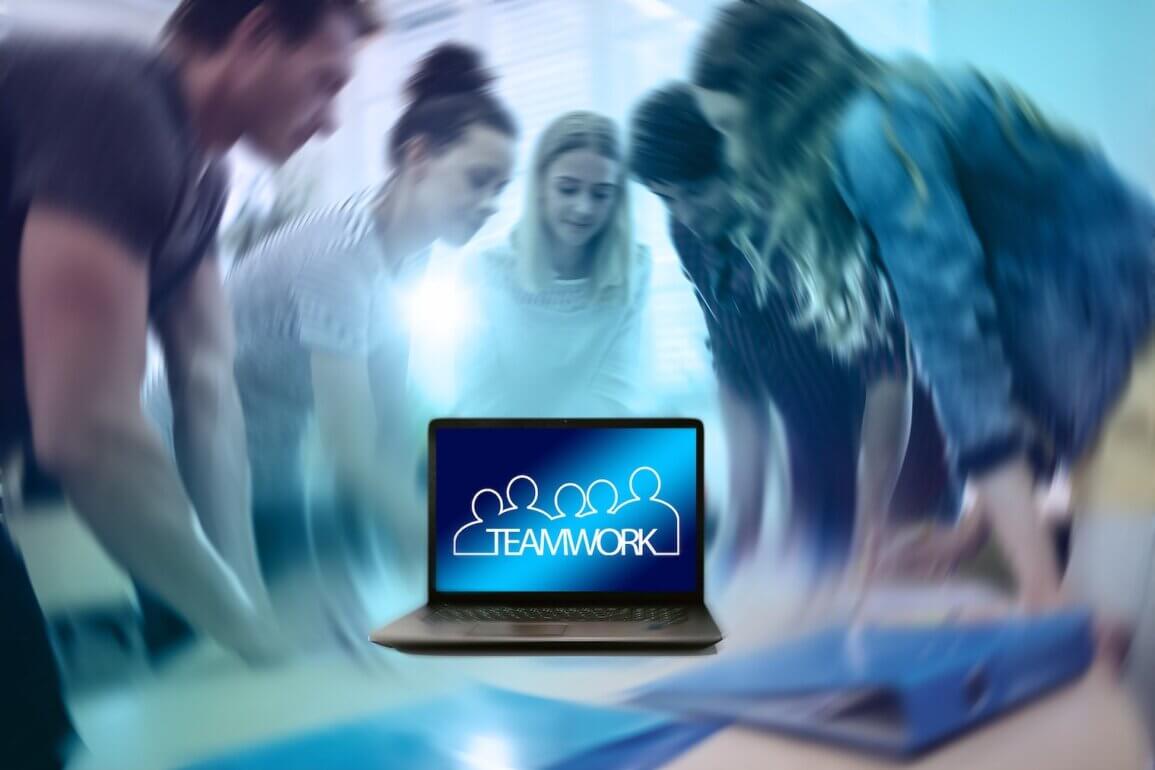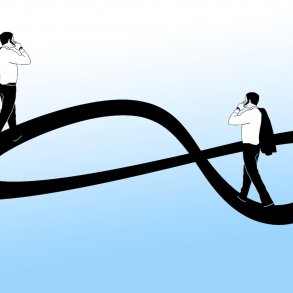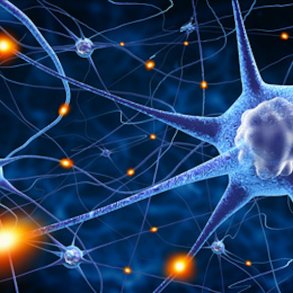By Norbert Netten for Enlivening Edge Magazine
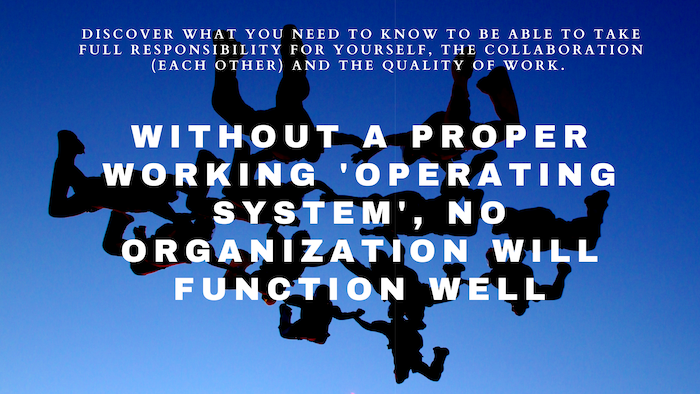
You are reading this article by looking at a screen. That screen is your interface. It’s the direct result of processes that take place within your tablet, phone, or computer. These processes are not visible. They are the result of well-functioning software and a stable operating system. Now, let’s use the way your device works as an analogy to look at how teams and organizations function well.
The interface of a team or organization is what you see and perceive as their output. It is their behavior and the quality of their services and products. The software they are using consists of the competencies and the personal characteristics that workers bring with them, the methods, and procedures they use, and the way they are organized: their structures. The operating system is the invisible force that ensures that the software and interface function well.
Nothing will function on any device without an operating system. The same applies to a team, department, or organization.
If your operating system is not stable, there will be symptoms.
Symptoms could be an increase of irritation and frustration, in fact anything that shows that there is room for improvement. But what exactly is the operating system of a team and organization?
Conditions for a properly functioning operating system
Before we answer that question, we must first discuss two essential conditions for any collaboration, but specifically for self-organizing. Self-organizing is the system that allows people to take full responsibility for themselves, their collaboration (each other) and the quality of work.
For the first condition, we use the frame of the Transactional Analysis model (TA). TA is an in-depth method of self-exploration, but we’re only using the tip of the iceberg. TA assumes that every person has three systems from which they think, feel, and act. These systems are called the Parent, Adult, and Child Systems. They are capitalized because they are systems, not real parents or children.
Parent, Adult, and Child Systems
A red traffic light means stop; green means continue. You cannot make that distinction without a Parent System. The Parent System of TA contains your norms and values, your beliefs about how things can best happen, what is right and wrong, dangerous and safe, and everything that provides framework and support to your life.
Another aspect of your Parent System is your ability to love unconditionally, to look at others and yourself with compassion. That is important if you want to live a somewhat peaceful and happy life based on more than adding value to society just by using your skills.
Your Child System contains your thoughts, feelings, emotions, and experiences that you experienced as a child and can still feel now, even while you are an adult. If you hear a song on the radio by the band you were a fan of in your youth, the chances are that you will experience some of the enthusiasm you had many years ago. Think of an unpleasant event or unpleasant period from your childhood, and there is a fair chance that you will feel similar emotions you had at that moment. Now let’s look at a team in which only Parent and Child systems are present.
Gerald, Caroline, and Burt are in a meeting. Gerald brings in an idea for a strategic change. Caroline looks worried and resists the idea. She is in now her judgmental Parent system. Burt doesn’t think it’s a good idea either, but he keeps his mouth shut just as he used to do at home when he was young, in the presence of his dominant father.
He wants to avoid the dominant response he expects to receive from Gerald. Burt is in his Child system. Gerald is disappointed by the unconstructive resistance of Caroline, and he is irritated by the fact that Burt does not participate. Gerald is in his Parent system too.
Gerald, Caroline and Burt, like all of us, need the third system, the Adult system, to reflect on the questions: ‘Why do I think what I think?’ ‘Why is that important to me?’ And, ‘What do they think?’ ‘Why is that important for them? Adult systems are also needed to reflect on questions like: ‘Why am I annoyed by my colleagues’ behavior?’ ‘What does that say about me?’ ‘How can we collaborate in a better way?’
These are all questions that ‘belong’ to the Adult system.
Having an Adult system is one of the two conditions for any relationship to work well, especially when collaborating in a self-management team, because there are no ‘parents’ to solve your problems for you.
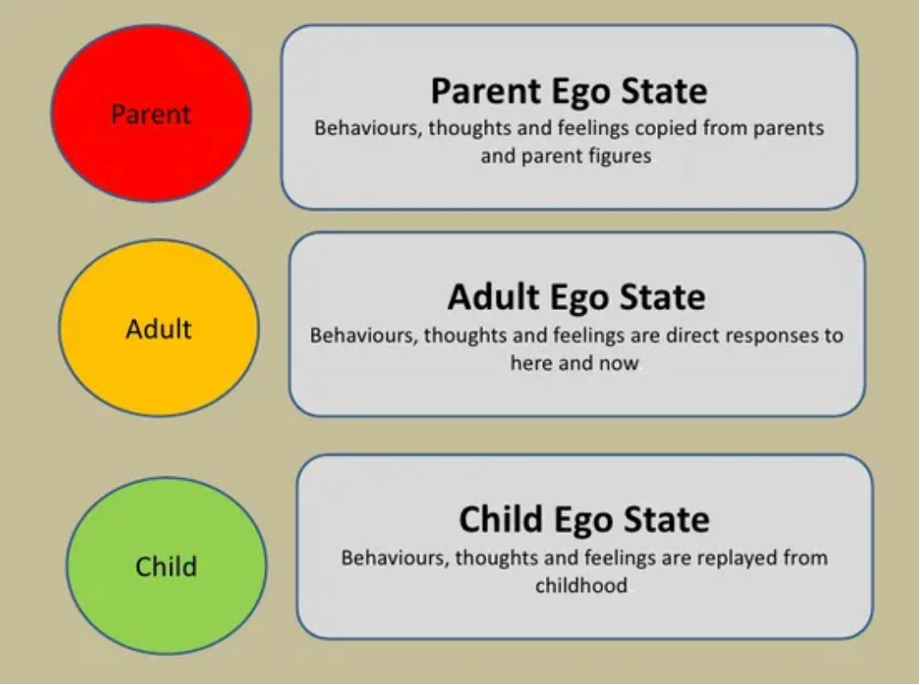
Transactional Analysis: Ego states
Declaration of Responsibility
The second condition for collaboration, and more specifically for self-management, is the “Declaration of Responsibility.” It means that every member of the team or organization declares the following:
‘I am willing to take full responsibility for myself, for each other, the collaboration, the quality of our work, and the result. I never hand over that responsibility.’
This declaration is like the declaration at a marriage: ‘For better and for worse, through thick and thin, until death do us part.’ The latter does not apply to work, but ‘for better or for worse, through thick and thin’ is a statement of intent of responsibility. You will look for solutions together when things are not going well.
To do that, you must all use your Adult system; otherwise, your communication will be defensive and strategic at best, or based on distrust at worst. You will attack or defend, or you will end up playing the so-called helper or victim role, all symptoms of Parent and Child system behavior.
A self-managing team is a ‘learning organization’
When there is enough Adult system present and when everyone involved has agreed to the Declaration of Responsibility, a team can work on strengthening their operation system. That basically means to grow a solid culture of trust, care-taking, and satisfaction. To do this, a self-managing team needs an explicit model of the operating system. They will use it to increase their self-learning capacity.
The Periodic Table of Radical Self-management is such a model. It’s a collaborative operating system. The word Radical means uncompromising in taking responsibility. Let’s take a look at the model.
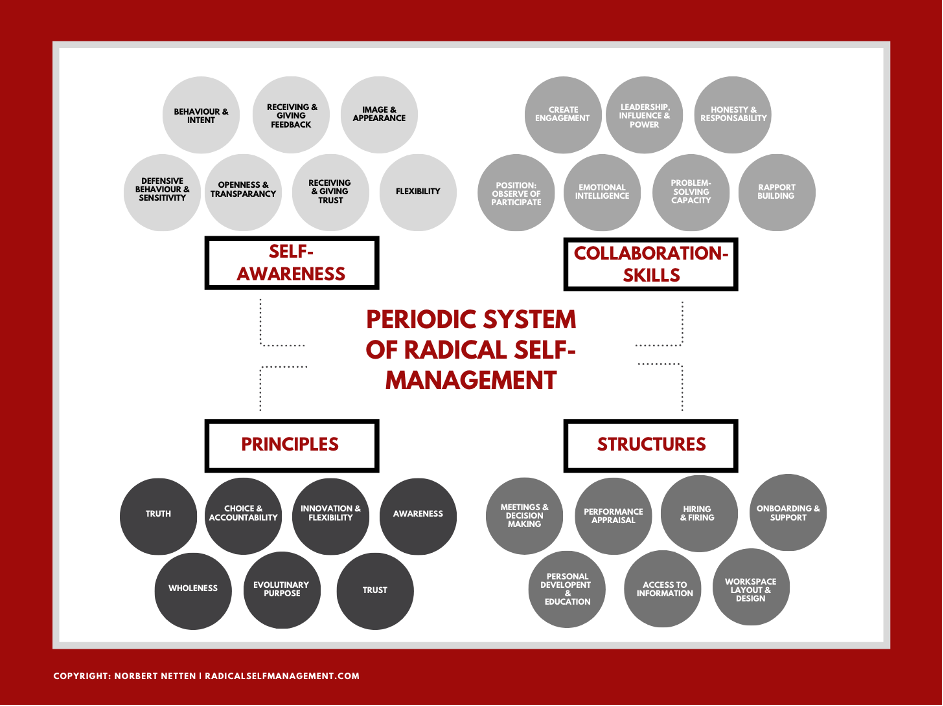
The Periodic Table of Radical Self-Management © Norbert Netten, Powerofconnection.world
The Periodic Table of Radical Self-management consists of four areas with seven themes each.
Themes are entrances to learning. They are ‘doors’. Behind each door lies a ‘module’ that teams can explore to build their culture of trust or to strengthen the operating system. How does that work?
There are different ways to use this operating system canvas. One is incident-driven: when something is not working well, the team will use the canvas to connect symptoms with specific themes on the canvas and move on from there. The second way to use the canvas is by performing learning modules on a regular base (e.g., two hours every month, for one year).
The structure for using the canvas is:
- Assign symptoms to themes.
- Chose a theme to start the learning process
- Design a learning model (or use one that already exists)
- Perform the learning module (together)
- Take time to implement
- Check whether the symptoms are gone
- Continue with the next theme (incident-driven) or choose the next theme.
Self-management changes the role of management, trainer, team leader, and coach
The focus of anyone supporting self-management teams and organizations will be explicitly to:
- strengthen the Adult system (TA) of all people involved.
- support team members in their willingness and ability for taking responsibility as indicated in the Declaration of Responsibility.
- promote the self-learning capacity of teams and organizations, by strengthening the operating system to build a solid culture of trust and satisfaction.
Conclusion
Without a properly functioning operating system, no team or organization will perform at its best. There will be symptoms that indicate that there is room for improvement.
Too often, people look at the ‘software’ for a solution, while the underlying cause is a malfunctioning operating system. That is especially important for self-management teams and organizations, since they can rely only on themselves for building a solid structure of trust and satisfaction.
The Periodic Table of Radical Self-management is a clear and sophisticated method for enhancing the learning capacity of teams, departments, and organizations. When used well, it enhances Adult behavior, responsibility, and trust.
 Norbert Netten is trainer and team & organizational coach, with over thirty years of experience in working with (mainly) management teams and individual senior professionals in organizations. He is founder and owner of Radical Self-Management and The Power of Connection. http://radicalselfmanagement.com/
Norbert Netten is trainer and team & organizational coach, with over thirty years of experience in working with (mainly) management teams and individual senior professionals in organizations. He is founder and owner of Radical Self-Management and The Power of Connection. http://radicalselfmanagement.com/
Norbert offers online and offline coaching for teams that want to work with the Periodic Table of Radical Self-Management. Inquiries: [email protected]
